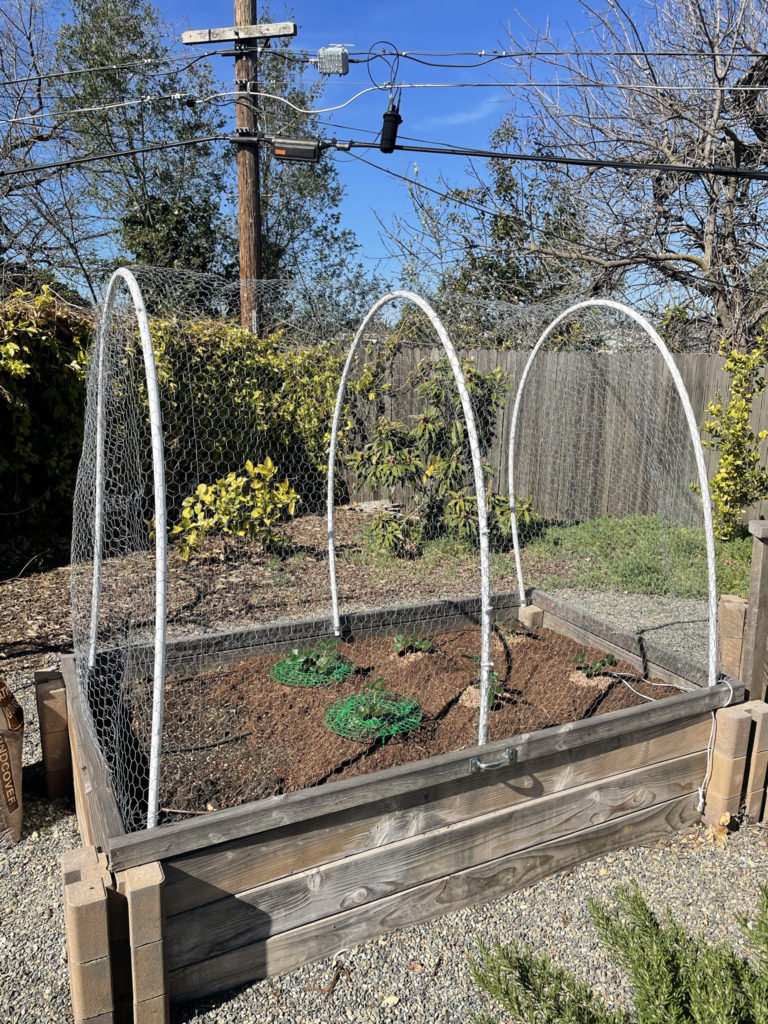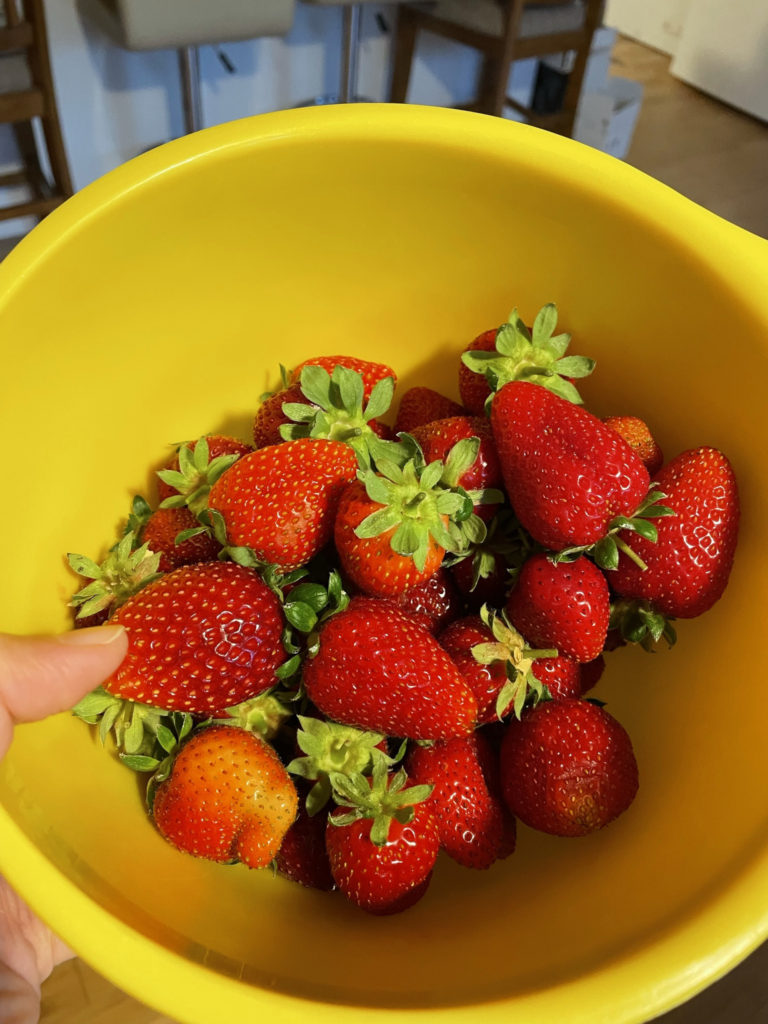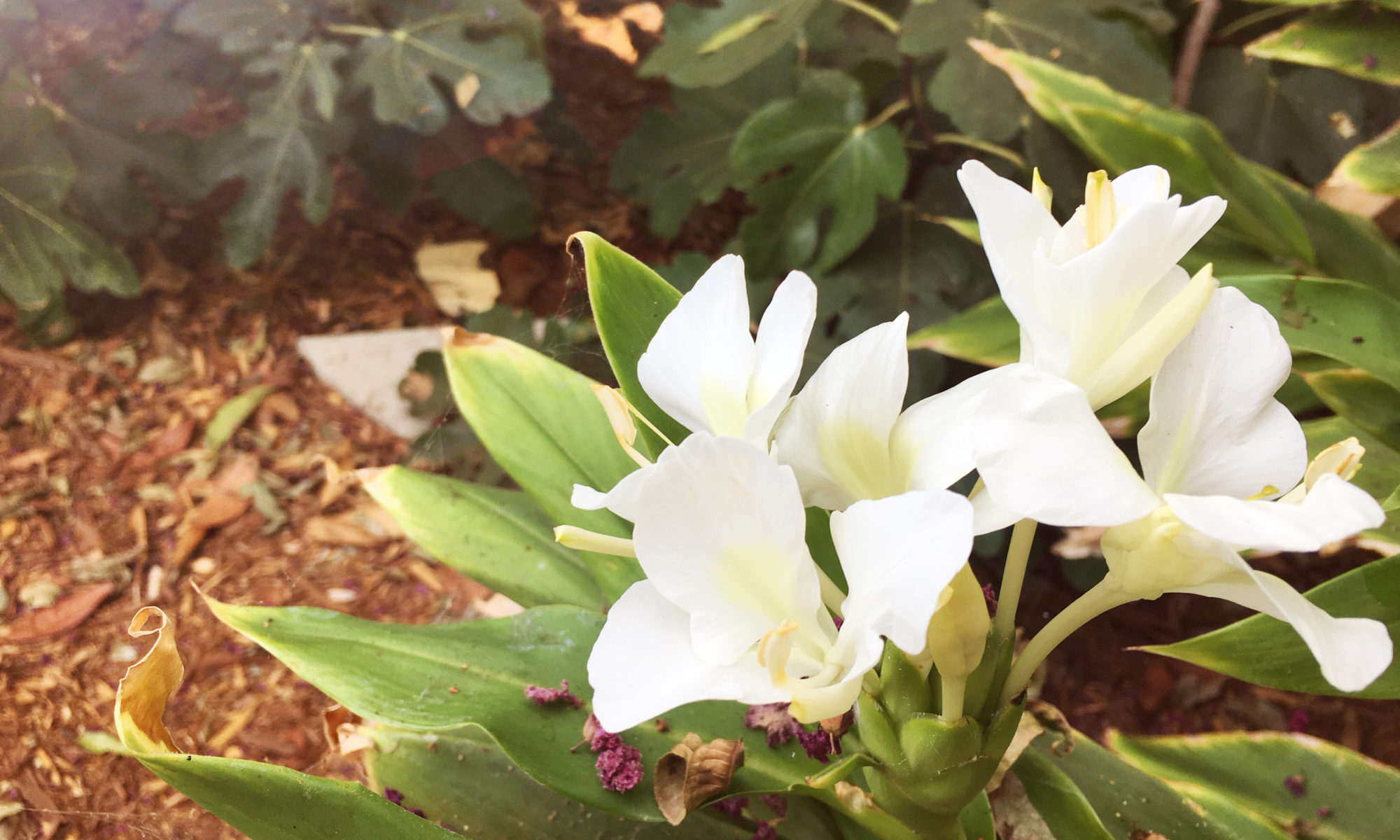


In 2021, we enjoyed a nice harvest of strawberries. We grew three day-neutral varieties: Eversweet, Quinault, and Albion. The Eversweets and Quinaults were on their second year, and the Albion were purchased and planted in the spring of 2021. The Eversweets were the most productive, but we still lost quite a bit of fruit to bugs and mold where the berries touched the soil.
As you can see from the pictures, we planted the strawberry on mounds, surrounded plants with plastic supports and mulched the soil. The white powder on the soil in the middle image above is diatomaceous earth sprinkled on the soil to deter ants. All these measures helped us protect the harvest, but the strawberry plants grew larger over the season and lots of fruit were forming beyond the strawberry supports and ended up touching the soil, where the bugs and mold did their worst.
In hopes of avoiding this same problem in 2022, I figured that if we could elevate the strawberries in their own little tube or riser (bottomless pots), covered with the strawberry support, this would give us an additional couple inches of protection, which might be enough to protect most of our harvest.

To accomplish this, I thought we could buy some concrete tree rings. The problem was that it was difficult to find a tree ring that was the right diameter, height, and price point. I loved the look of this one:

It seemed a little silly- I wanted something that was so simple and I couldn’t find any available! So I figured that we could make our own… Here were the criteria for our strawberry risers:
Inside Diameter: less than 12 inches. Our strawberry supports are 11.81 inches in diameter, and we want it to not fall into the riser. The closer we can get it to under 11.81 inches in diameter, the more space for the roots of the strawberry.
Outside Diameter: less than 19 inches. The inside width of our raised bed is about 78 inches, and we want to place at least four strawberry plants in each row (along the width).
Height: between 5-6 inches. I figure this would give us enough distance from the ground for any longer fruit stems, but not so much that it would look weird and create any problems with irrigation.
With this idea, I started watching a bunch of Youtube videos about diy concrete planters. I had several concerns.
- The concrete can leach lime, thereby increasing the pH of the soil (making conditions more alkaline). Strawberries like the soil to be a bit on the acidic side, around pH=6.5. We decided on a combination of both 2. and 3. below.
- One solution would be to completely seal the concrete (a bit of work and costs, and not sure how long this would work outdoors in our raised bed).
- Another solution is to amend the contents of the concrete riser with acidic materials, to create a localized acidic area.
- Lastly, we could soak the new concrete risers in water for several days, and change the water a couple of times. This would help leach out some of the lime, and thereby, have less lime to leach into the soil.
- It seems that the concrete can be difficult to remove from the mold, some people recommended PAM, others WD-40. Other people cut the outside of the mold to release the form. I figured we’d try it all.
- All the diy concrete planter videos I see have a bottom to the ‘planter’, whereas I just want a ring, so we would have to adjust our mold accordingly. Strawberry plants have relatively shallow roots, but I wanted the roots to have the full benefits (temperature regulation, soil microbes, water drainage) of as much of the soil in the raised bed as possible.
With these criteria, we moved forward to looking for materials that we could use for making the concrete mold.
